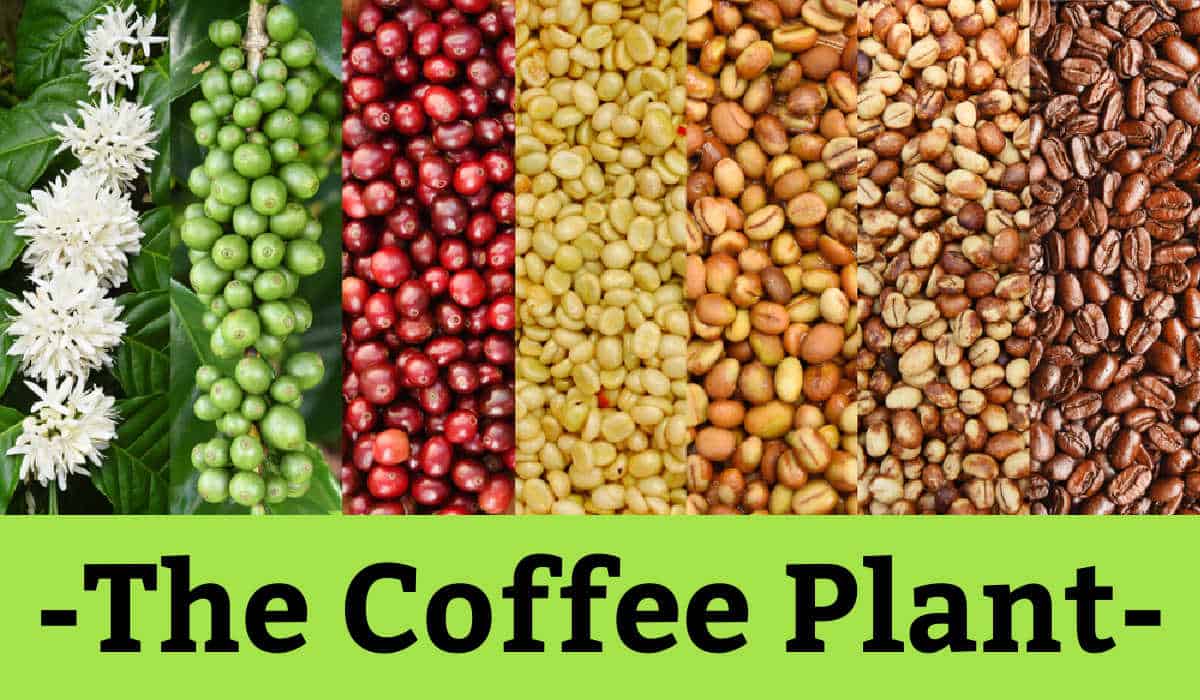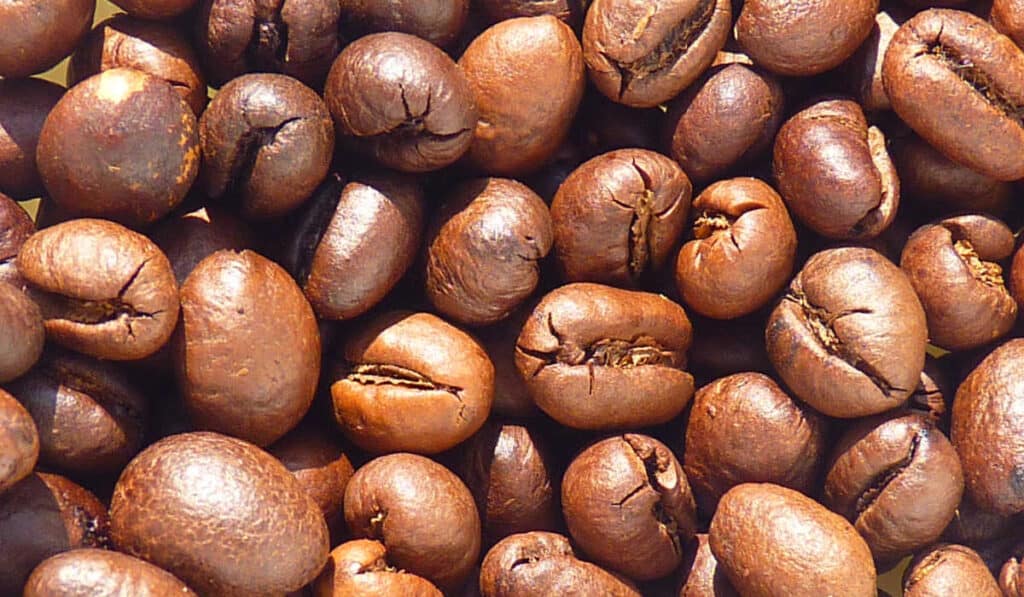As an Amazon Associate I earn from qualifying purchases.
When I first had a small piece of land to grow plants on (okay, it was a window box) I was trying to figure out what I could grow that would make the best use of the space. Since I drink coffee daily (many times per day) I decided that a coffee plant might be the best thing to plant.
Which led me down a rabbit hole where I realized that even the words “coffee plant” were probably not quite right.
I won’t burden you with all of the unnecessary details I found out but let’s take a dive into what makes a coffee plant a coffee plant and how these differences influence your daily cup.
The Coffee Tree
The life of a coffee plant starts off as a coffee bean which looks very much like the variety you find at the store.
While each variety of coffee comes from a different type of tree, the most commonly consumed coffee (Arabica) comes from a spindly trunked tree with many branches that support foliage, flowers, and eventually fruit.
The majority of the world’s coffee is grown by dedicated coffee growers who own a plantation and specialize in a certain type of tree. Usually, the tree that is most suited to their particular climate and harvesting style. Which is the reason that coffee from different locations can differ so much in taste.
Depending on the variety of coffee grown, most trees (or large bushes) grow anywhere from 8-12 feet tall and enjoy most high elevations (but not freezing temperatures).
Once planted, the bean moves through the “soldier” stage and can start producing fruit as quickly as 9-12 months. However, this upfront time investment made growing my own coffee plant (tree, actually) in my windowsill an unsavory option.
In addition, most coffee trees have only one main harvest per year. This harvest is usually instigated by the “rainy season” which is also not available on my windowsill.

Most growers harvest their fruits when the majority are ripe (as they ripen at different times) but more prestigious farms make a concerted effort to only harvest the ripe fruits each time, resulting in multiple passes on the trees and much more effort (expense) involved.
The Coffee Fruit
In general, the coffee fruit is about the size of a large grape. The coffee fruit (known as a coffee cherry” starts out as green and slowly turns from yellow to red while it ripens.
The part that is commonly used for our drinks is the inner seed. The cherries must be processed by skinning and removing the pulp before the seeds can be dried/roasted.

To give you an idea of the work involved in making a cup of coffee, most cherries contain only two seeds inside which can be quite difficult to extract. Other varieties (mutants, really) such as Peaberry beans have only one bean inside.
Coffee cherries themselves are a fascinating part of the coffee plant and have much to offer beyond the bean. You can eat coffee cherries, squeeze them for juice, brew the husk, turn them into a dessert, or even make cosmetics out of them.
However, most coffee plants are utilized only for coffee bean production as the demand makes them a highly profitable plant.
Conclusion
To make a long story short, growing a coffee plant at home was not meant to be. At least for me.
If you live in a tropical mountain climate and have enough space (and time to wait) then it might be for you!
If you are going to put in the effort to grow your own coffee plant, send me some beans!







